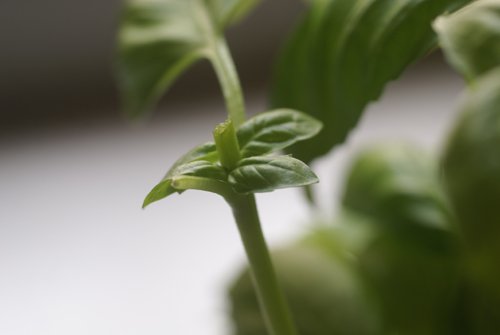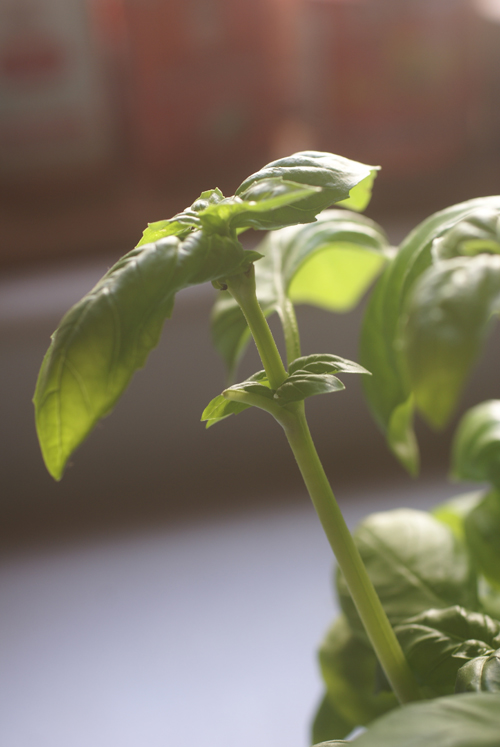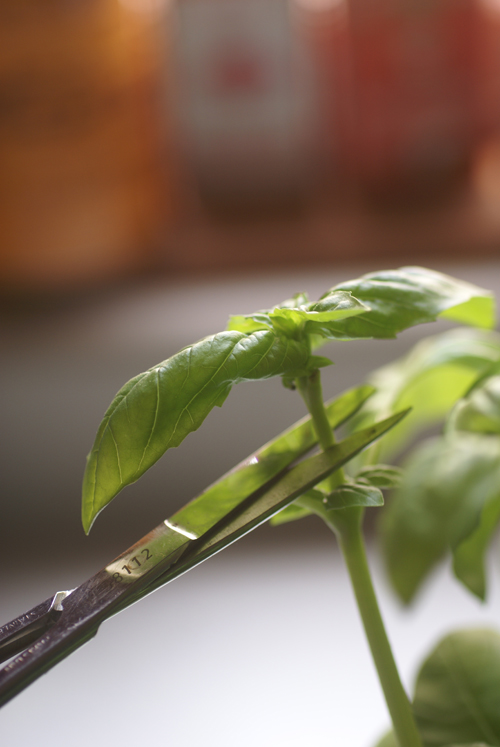There is a great deal of fear and mysticism surrounding how to prune plants. This has some people so dumbfounded they don’t even know where to begin. I’m about to offer you a different solution. If you think of pruning a plant just like cutting your hair, the mystery disappears and it all makes perfect sense. This is why I’m going to compare the act of pruning your plant to cutting your hair. This is a walk-through. A tutorial for the terrified.

When to make the cut?
For most plants that need pruning, late winter or early spring is the time to do it. Most plants go dormant in the winter and will be less stressed by pruning. Making your cuts during this time will help to ensure that the wound won’t be subject to disease or insects and has time to heal before it starts rapidly growing. Think of this kind of like choosing to cut your hair two weeks before your wedding rather than two hours before — you want to give it time to settle and find its groove.
This general rule of course has its exceptions. For instance, you can’t exactly prune your tomato plant in late winter when it’s still in seed form, can you? Use your best judgment, and if these rules don’t apply to your situation, you can feel free to change your time frame.
Reasons for pruning plants are the same as reasons for cutting hair
- To remove dead, dull, or damaged parts, in other words, to maintain health.
- To make it grow fuller and faster.
- To shape it into the perfect design.
Pruning to maintain health
Think of this kind of like a trim job. Most people get their hair trimmed every few months to polish up their look. All those split ends, bad dye jobs, and heat damaged hair can disappear with the snip of the shears, leaving you with smooth and glossy locks.
Pruning to maintain plant health is just the same, all the diseased parts, dead bits and excess stems from your plant can be cut to bring it back to perfect health. First, examine your plant, seeking out anything that looks unhealthy, dead, spotty or is in the process of browning. These parts should be cut off, whether it’s a single leaf or a whole branch, it is best to clean out the damaged parts.
Pruning to shape
Just like when you get your hair cut, you want to prune your plant into an attractive and natural shape. Would you grab random locks of your hair and just start cutting willy-nilly, with no concern over length or placement? Of course you wouldn’t! So don’t do this to your plants either.
You want your cuts to be smooth, even and well thought out. Don’t leave stubs sticking out of the trunk, just as you wouldn’t leave three longer hairs sticking out of your bangs, go slowly and work purposefully. You should be cutting branches or stems that are overcrowding areas of the plant, or making it look lopsided. Before you make a cut, imagine what the plant will look like without that branch. Will it improve the shape? Remember, just like in hair dressing, you can’t go backwards. Careful planning is key.

Pruning for fuller growth
Pruning for growth is kind of like a woman putting layers into her hair to take off some of the heavy weight of long hair, but also make her hair look fuller. Adding layers to hair is done carefully and evenly, making cuts in all the right spots.
Plants need some parts lopped off once in awhile to facilitate proper growth. Thinning out the branches or stems will promote air circulation and allow sunlight to reach more of the leaves. For many plants, cutting off growth at the base of a stem will allow two new stems to grow, which will make your plant fuller and more balanced.
Basil is a good example of this pruning for fuller growth. If you look at the stem of a basil plant, you’ll see four tiny leaves popping out of the sides every few inches. If you cut the stem just above those leaves, the plant will put energy into forming those four leaves into two brand new branches full of basil goodness.
This same idea applies to tomatoes and strawberries. Cutting the runners off strawberries will force the plant to focus on fruit instead of new growth. Cutting the suckers (stems growing out from between the V of the main stem and a branch) off of a tomato plant will allow it to put that energy into flowers and fruit instead. Along the same lines, dead flowers should be removed from ornamental plants so the plant focuses on producing more flowers rather than producing seeds.
For most other plants, the parts that need to be cut are those that look out of place. Branches or stems that are dead, broken or hanging down can be cut. Those that are growing at an odd angle and crossing over the trunk or main stem can also be cut. Any parts that are causing extreme overcrowding in any space should be removed. Remember to keep it even, just as you wouldn’t want to cut the hair on only half of your head, you don’t want your plant to be lopsided.
Pruning tools
If you were going to cut your own hair and you had the choice between a pair of scissors that are sharp, clean and right for the job, or a pair that were dull, rusty and dirty, which would you choose?
Can you imagine going to cut your hair and using a pair of rusty, dull scissors? No way! You want the best tools for the job. You want a tool that will give you clean cuts with the least amount of resistance and not leave you itching at your scalp. Let’s give our plants the same consideration.
Tools must be sharp and clean before use. If you used the same shears to cut into a diseased plant you should wash them off with bleach or alcohol before you cut anything else. Also, be sure to choose the right tool for the job. Thick branches may require a saw. Small stems may only require your fingers.

Are you afraid you’re going to mess up? Don’t be. Like a bad haircut, badly pruned plants get over it with time. You’re not likely to kill or harm your plant by pruning it, so why not give it a try? Once you’ve mastered pruning your plants, you’ll have all the confidence in the world, and you might even take up a career in hairdressing.

Really appreciate this metaphor! Makes a lot of sense. Nice and concise also